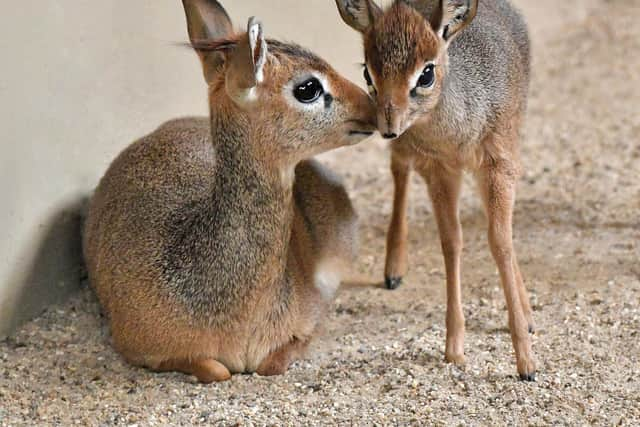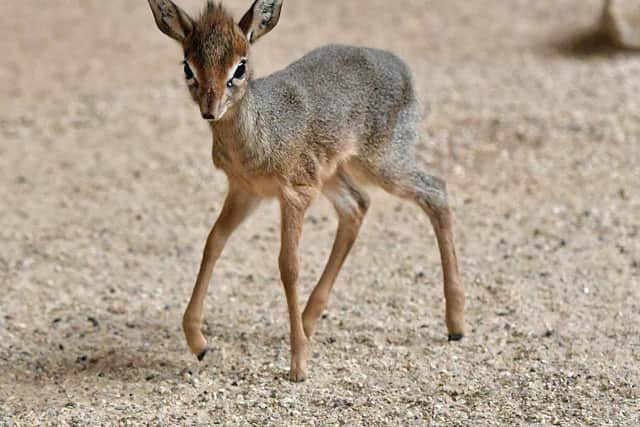Marwell Zoo: Hampshire zoo welcomes second dik-dik calf this year
and live on Freeview channel 276
Mdalasini was the first Kirk’s dik-dik ever to have been born at Marwell so the arrival of a sibling and playmate is a great achievement for the team.
Advertisement
Hide AdAdvertisement
Hide AdThe newest little arrival was born to mother, Caramel and father, Jos on September 9.


SEE ALSO: Powder Monkey Brewery in Gosport acquires Australian company Southern Highlands Brewing Co
The youngster and its mother were initially left to bond behind the scenes but are now enjoying their habitat with the rest of the group.
A Marwell Animal Keeper said: “We knew mum was expecting and she was close to her due date, but for the calf to be born out on the hardstand was a surprise to our animal team and the rest of the Kirk’s dik-dik. It’s settled in well with the rest of the group and has been seen spending time with mum Caramel and sister Mdalasini throughout the habitat. When they are young they take themselves to sit in safe places around the habitat to rest. It’s a welcome addition to the group.”
Advertisement
Hide AdAdvertisement
Hide Ad

Kirk’s dik-dik can be found in Kenya, Tanzania and Namibia and they are currently listed on the International Union for the Conservation of Nature (IUCN) Red List as Least Concern.